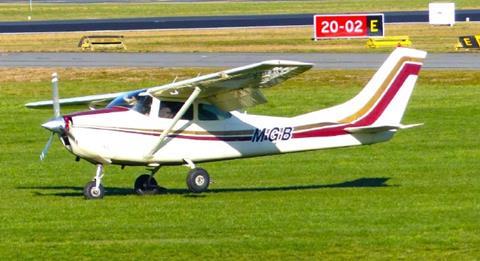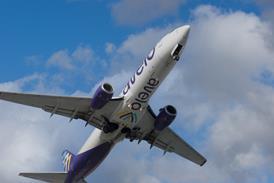The fatal crash of a Cessna C182H Skylane in New Zealand highlights the importance of pilots familiarising themselves with the challenges inherent in mountain flying.
The crash occurred on 4 August 2022 when the pilot – the only occupant aboard the aircraft – was flying from Franz Josef Aerodrome across the Southern Alps Mountain range to collect two associates at Rangiora Aerodrome and then return to Franz Josef, says the Civil Aviation Authority of New Zealand.

The pilot had 74h of flying on the C182H, and total fixed wing experience of 215h. He also had a private helicopter licence and 73h on rotorcraft.
Prior to the flight, the pilot accessed weather information, and discussed his plans with other pilots. They warned him about challenging weather conditions in the mountains. The pilot said that he would turn back should the weather prove too challenging.
ADS-B data shows that the pilot departed Franz Josef at 08:40 local time. Shortly after, he had a radio exchange with a commercial pilot who stated that the weather was due to worsen. Subsequently, the commercial pilot stated that they “…would have advised him not to, knowing what the weather pattern is like and capable of.”
There was no further radio communication from the pilot. ZK-MGB’s ADS-B track indicates that the pilot attempted to turn back to Franz Josef. However, at 08:58 ADS-B data show the aircraft losing 2,100ft of altitude in 14s before the track was lost.
“The high rate of descent just prior to ZK-MGB striking the terrain and the wreckage pattern indicates a high-energy accident sequence,” says CAANZ. “ZK-MGB’s track shows a right turn, consistent with a conscious pilot decision to turn back.”
CAANZ offers three possible reasons for the apparent decision to turn back: turbulence, deteriorating weather conditions, and cloud.
“It is likely that there were significant downdrafts around the southern side of Mt Nicholson in the vicinity of the accident site, even at altitudes higher than the peak,” says the report.

“The downdrafts would have become strong as ZK-MGB dropped below the ridgeline of Mt Nicholson and the Froude Range. The conditions described above are common to the Southern Alps in high winds. Even pilots of larger aircraft have reported experiencing insufficient aircraft performance to maintain altitude in similar conditions. The downdrafts experienced by the pilot in ZK-MGB likely exceeded the climb performance of the light aircraft.”
CAANZ advises that pilots in downdraft try not to outclimb it, but to “turn out of the down flying air as soon as possible.”
The downdraft may also have pushed ZK-MGB into cloud, where the pilot may have lost visual reference with the snowy terrain.
Later in the day search and rescue personnel located the aircraft at an altitude of 6,126ft on a steep slope underneath an ice shelf on glacier.
Given the condition of the wreckage, they declared the crash “unsurvivable.” Weather conditions were too dangerous to deploy personnel with a helicopter winch.
In a safety message, CAANZ reiterates the importance of pilots becoming familiar with mountain flying. Moreover, pilots who regularly fly in the mountains should complete a mount flying training course.


























